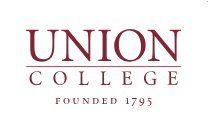What is Fair Use?
Fair use is a part of copyright law that recognizes certain uses of copyrighted works benefit society without causing undue harm to copyright holders and therefore do not require permission from the copyright holder.
Some of the examples listed as fair use in copyright law include criticism, commentary, parody, news reporting, teaching, scholarship, and research. However, not all uses for these purposes will automatically be fair.
Fair use is purposefully vague so that it can remain flexible as technologies and types of uses change over time. However, its vagueness can make it more difficult to decide when your use is or is not fair. In order to decide if a use is fair, you have to analyze the particular details of your situation and proposed use.
Everyone is free to exercise the right to make a fair use of a copyrighted work, but copyright owners are also free to disagree with a user's fair use analysis and to subsequently sue for copyright infringement. That means that those who want to exercise their fair use right will need to do so with careful thought and will need to weigh the risks involved in certain uses.
For examples of cases that courts have decided as either fair use or not fair use (copyright infringement), see:
Fair Use Analysis
Fair Use ChecklistCopyright law lists four factors that must be considered when performing a fair use analysis, although others can be considered. These factors are:
- The purpose and character of the intended use, including whether the use if for commercial or for non-profit educational purposes
- The nature of the copyrighted work being used
- The amount and substantiality of the work that is used in relation to the work as a whole
- The effect on the potential market for or value of the copyrighted work
Another factor that has emerged as a key consideration in recent copyright case law is transformative use. A use of a copyrighted work may be considered transformative if it uses the copyrighted work in a completely new way or with a new purpose that the original work's creator never intended and it does not merely supersede the use of the original work. A transformative use of a copyrighted work can help weigh in favor of fair use.
Copyright Information Services from the University of Minnesota Libraries, the Fair Use Checklist from Columbia University Libraries are all helpful tools to use when you are analyzing your proposed use in light of the fair use doctrine.

